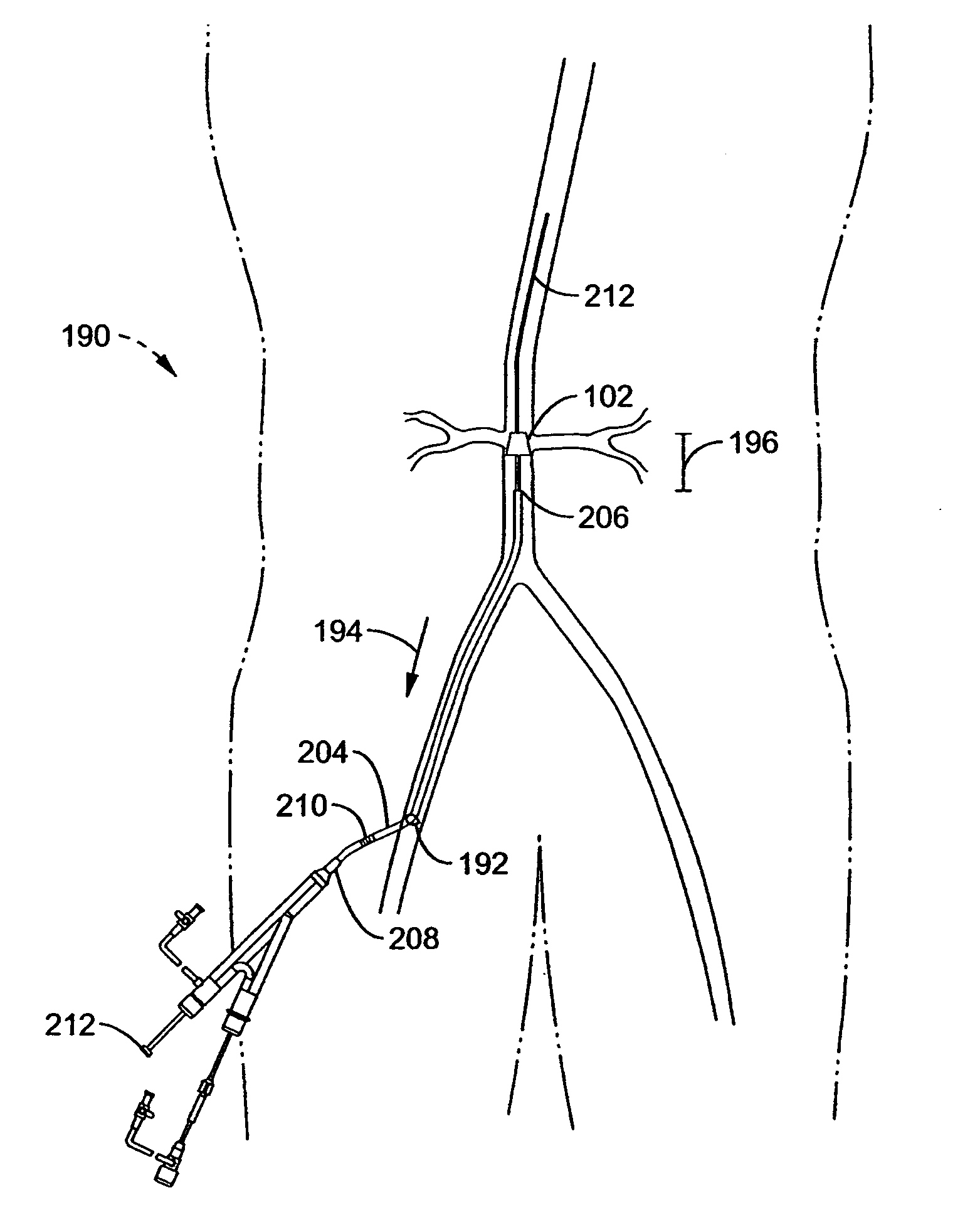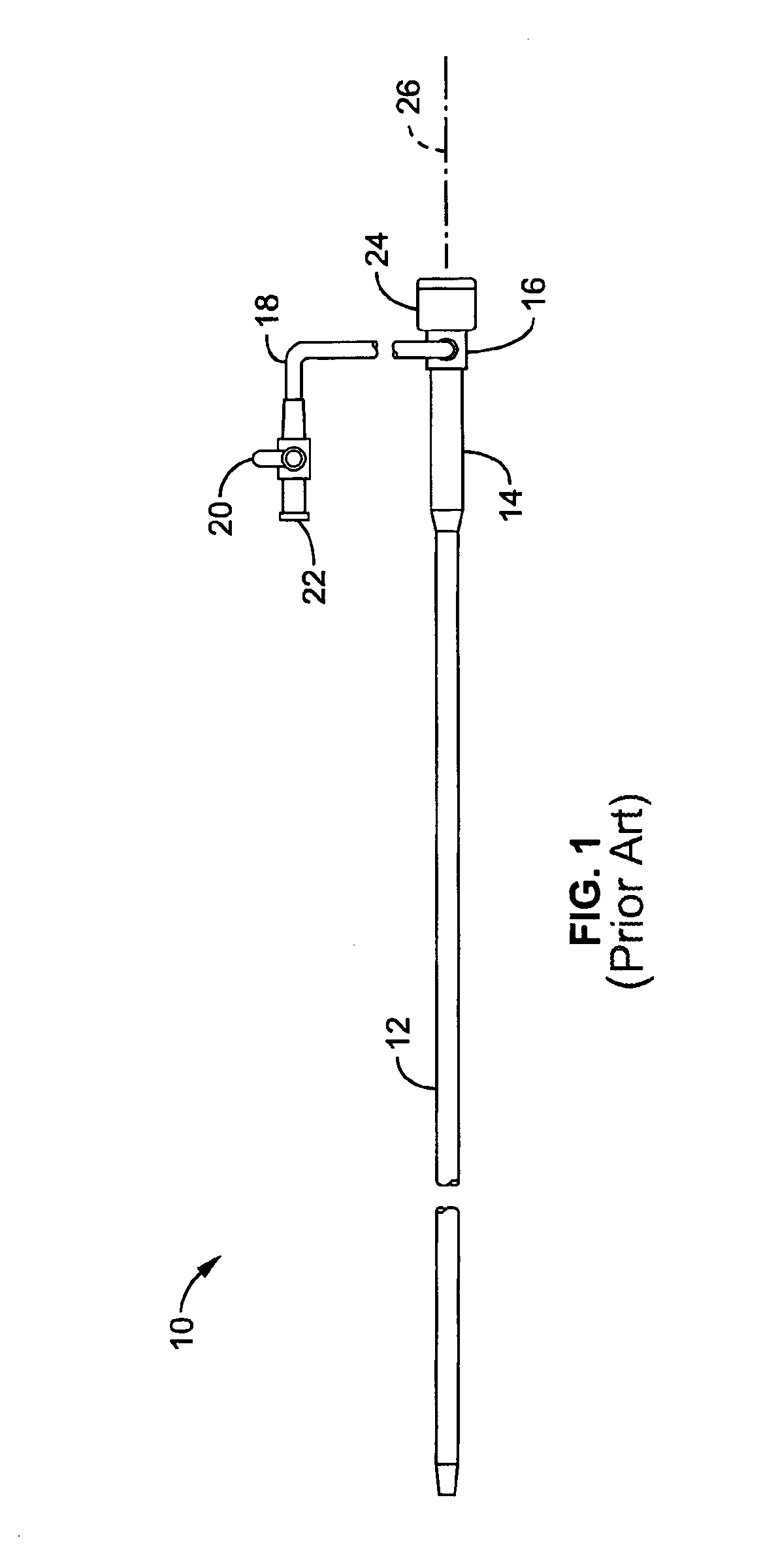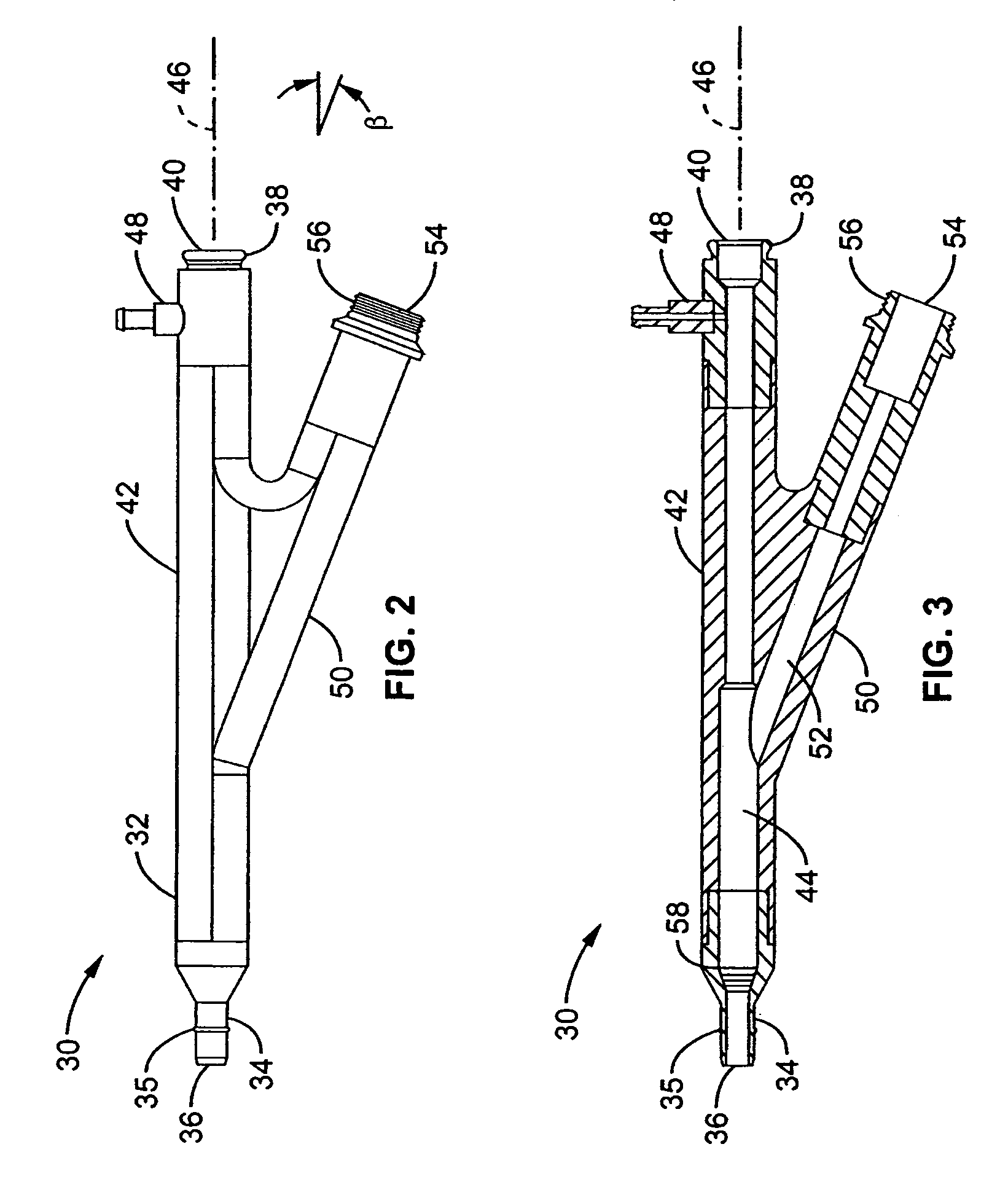Apparatus and method for inserting an intra-aorta catheter through a delivery sheath
a delivery sheath and catheter technology, applied in the field of medical devices, can solve the problems of patient arf, patient safety compromise, and inability to achieve the effect of avoiding aortic valve damag
- Summary
- Abstract
- Description
- Claims
- Application Information
AI Technical Summary
Benefits of technology
Problems solved by technology
Method used
Image
Examples
Embodiment Construction
[0061]As will be appreciated by reference to the detailed description below and in further respect to the figures, the present invention is principally related to selective renal flow systems and methods, which are thus generally related to subject matter disclosed in the following prior filed co-pending U.S. Patent Applications that are commonly owned with the present application; Ser. No. 09 / 229,390 to Keren et al., filed Jan. 11, 1999 now U.S. Pat. No. 6,749,598, issued Jun. 15, 2004; Ser. No. 09 / 562,493 to Keren et al., filed May 1, 2000; and Ser. No. 09 / 724,691 to Kesten et al., filed Nov. 28, 2000, now allowed. The disclosures of these prior patent applications are herein incorporated in their entirety by reference thereto.
[0062]The invention is also generally related to certain aspects of subject matter disclosed in other Published International Patent Applications as follows: WO 00 / 41612 to Libra Medical Systems, published Jul. 20, 2000; and WO 01 / 83016 to Libra Medical Syst...
PUM
 Login to View More
Login to View More Abstract
Description
Claims
Application Information
 Login to View More
Login to View More - R&D
- Intellectual Property
- Life Sciences
- Materials
- Tech Scout
- Unparalleled Data Quality
- Higher Quality Content
- 60% Fewer Hallucinations
Browse by: Latest US Patents, China's latest patents, Technical Efficacy Thesaurus, Application Domain, Technology Topic, Popular Technical Reports.
© 2025 PatSnap. All rights reserved.Legal|Privacy policy|Modern Slavery Act Transparency Statement|Sitemap|About US| Contact US: help@patsnap.com



